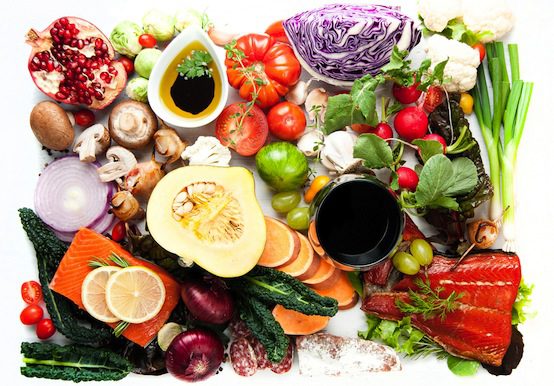Teaching Obesity, Selling Sickness

As the country goes through another excruciating health-care fight in Washington, I find myself watching more CNN than I should, and I can’t help but notice the commercials. Half of them (I exaggerate only slightly) are for weight-loss schemes, in which the pre-packaged, highly processed meals sent to your door somehow shrink your waistline. The other half are for pharmaceutical drugs meant to treat diet-related diseases such as diabetes and heart disease. (Given that we’re the only country in the world except New Zealand that allows direct-to-consumer marketing of pharmaceutical drugs, these numbers are not altogether surprising.)
Our health-care problem is often symbolized by the number 17: the percentage of GDP that we spend on it, a figure higher than almost any country in the world. Three different numbers should take its place: America’s rank in the global charts for diabetes, heart disease, and obesity.
Among its wealthy, industrialized peers, the United States is close to having the highest diabetes rate in the world, and the same is true for obesity. Deaths from heart disease are similarly high.
Due in no small part to this massive disease burden, U.S. life expectancy lags behind virtually the entire Western and East Asian world, and is surpassed by Cuba and Slovenia, among other less-developed countries.
Life magazine wrote in 1955 that Americans were “as well fed as any people in the world. Each generation is taller, bigger and healthier than the preceding one—and each has a longer life expectancy.”
In 2004, then-Surgeon General Richard Carmona sounded a different note: “Because of the increasing rates of obesity, unhealthy eating habits and physical inactivity, we may see the first generation that will be less healthy and have a shorter life expectancy than their parents.”
Approximately one-third of total U.S. health-care spending is on diseases related to excess sugar consumption alone. The simple fact is that a very large percentage—maybe even a majority—of U.S. health-care spending is on entirely preventable diseases.
The role of personal dietary choice in these abysmal health statistics cannot be overlooked, and paternalistic laws monkeying with the size of soda bottles are not the answer. However, our food system is dominated by a relatively small handful of large, well-connected, and well-protected industrial agricultural firms and food manufacturers. Call it the agricultural-industrial complex.
The most obvious nexus between industrial agriculture and complicit government regulators is the farm-subsidy system, which neither helps small farmers nor promotes the production of nutritious food. Its primary effect is to subsidize industrially produced corn and soy, as well as sugar, which in turn become the major ingredients or fillers for a vast cornucopia of highly processed and refined foods manufactured by the likes of Kraft, Nestle, and PepsiCo. This operates as an indirect subsidy for junk-food manufacturers, whose hundreds of brands and product lines fill shelf after shelf in the supermarket.
Beyond farm subsidies, this cronyism manifests itself in certain laws. Michael Pollan reports in The Omnivore’s Dilemma that slaughterhouses are required to have bathrooms and sinks with regular plumbing. Polyface Farm, a tiny organic farm in rural Virginia, has no bathroom or sink because its slaughtering area is not a building but a semi-open pavilion. Joel Salatin, the proprietor of Polyface, struggled to convince regulators that he deserved an exemption, even though his meat products had fewer pathogens than those from industrial operations. And until recently, food-safety laws written with industrial manufacturers in mind effectively banned individuals or very small businesses from selling any food products. (This has now been largely remedied by “cottage food laws.”)
Whether or not such laws and regulations are written for the benefit of industrial agriculture, the fact is that they appear and operate as though they were.
Another aspect of the problem is the pervasive junk-food contracts that food giants have made with struggling public schools. In 2012, Mother Jones reported that a whopping 80 percent of public schools had exclusive contracts with either Coke or Pepsi to provide all drinks on premises, primarily as a means of augmenting tightening school budgets. The report also found that children in these schools were more likely to be obese than children in schools without such contracts. This is especially appalling because dietary and nutritional preferences are largely formed in youth and tend to become habits. Instead of funding our schools, we are funding industrial corn farmers, whose product sweetens the soda that is habituating our children to a lifetime of unhealthy eating.
All of this matters because the food products driving our epidemic levels of diet-related disease are not those being made by small proprietors and tiny organic farms. The disease burden instead is driven primarily by the boxed, bagged, vacuum-sealed, bottled, canned, and otherwise processed concoctions coming out of the taxpayer-subsidized agricultural-industrial complex.
In essence, we are subsidizing our own disease burden, and in turn paying for its alleviation through our overburdened health-care system. Japan and France have healthier populations and cheaper health-care systems not because their people or their governments are superior but because their food systems have not been colonized by an artificial oversupply of pseudo-food.
Against a rising tide of taxpayer-subsidized pathology, there is only so much that investments in even the best health-care system in the world can do. Dismantling the agricultural-industrial complex might pay more health dividends.
Comments